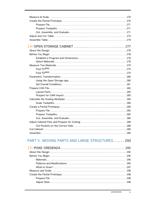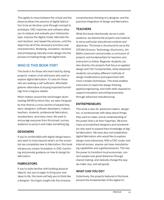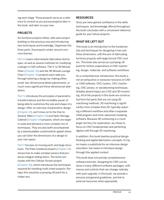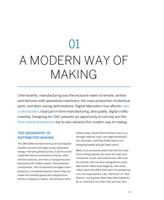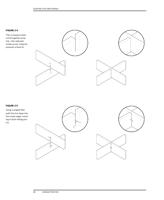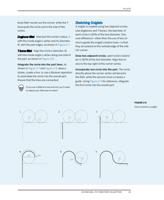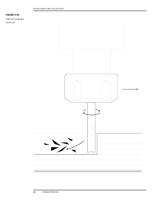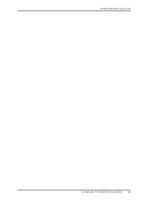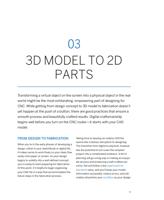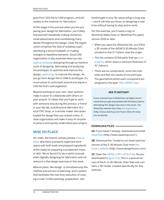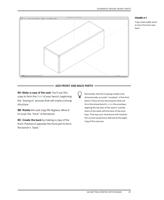
FILLETS
FILLETS
The sniglet is a type of fillet. A fillet is a design
feature that rounds off a corner. Although fillets
can be added to both outside and inside cor-
ners (and can even refer to adding material to a
corner via welds), when it comes to cutting flat
parts, it’s imperative to add fillets to the interior
corners if you want your joinery to fit properly.
If you come from a woodworking background,
you may have had to resort to extensive hand
labor to remove the residual inside corner
material your manual router left behind. When
working with a CNC, it’s far easier, efficient, and
elegant to add fillets to your files and let the
machine do the work.
In addition to the sniglet introduced earlier,
there are two other commonly used fillet solu-
tions: dogbones and t-bones, shown in
Figure 2-6. These fillet types are named for
their appearance. When a dogbone fillet is
added to both sides of a slot, the slot takes on a
cartoonish, dogbone- or t-bone-like shape.
TOOL DIAMETER MATTERS
Regardless of type, fillets are tool diameter
dependent; their size and shape are deter-
mined by the diameter of the end mill used to
cut the parts. For context, the projects in this
book use both ¼″ (6mm) and 1⁄8″ (3mm) diam-
eter tools.
Because you’re hardcoding the tool size into
your design, it’s a good practice to draw fillets
slightly bigger than necessary—110% larger
than the actual tool diameter works well. This
ensures that if the drawing needs to be scaled
down slightly, the end mill will still fit onto the
inside corners. Scaling is covered in detail in
“Scale Your CAD File” on page 133.
FIGURE 2-6
Machined fillet types
02/END MILL TO FURNITURE COLLECTION
41













